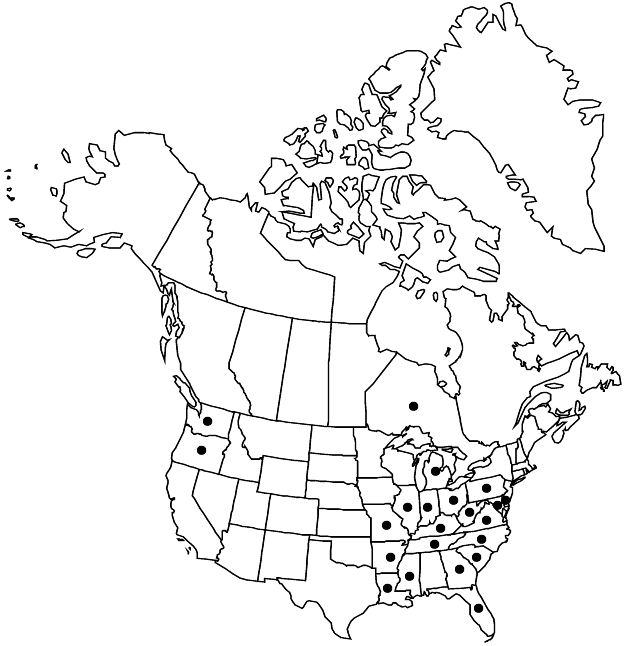Crataegus phaenopyrum
Gesch. Bot., 84. 1793.
Trees, 40–100 dm. Stems: 3-year old twigs shiny, deep reddish-brown, older dark gray; thorns on twigs ± straight, 2–5 cm. Leaves: petiole slender, sometimes both abaxially and adaxially short rusty-tomentose, eglandular; blade broadly to narrowly deltate, 3–6 cm, base truncate to rarely cuneate or cordate, sometimes very shallowly so, lobes palmately or pinnately 2 (or 3) per side, margins serrulate, veins 6 or 7 (or 8) per side (to sinuses), apex acute, surfaces glabrous. Inflorescences 15–30-flowered, flowers strong-smelling; branches glabrous; bracteole margins stipitate-glandular. Flowers 10–12 mm diam.; hypanthium glabrous; sepals 2 mm; stamens 20, anthers ivory; styles 3 (or 4). 2n = 51, 68.
Phenology: Flowering Jun; fruiting Sep–Nov.
Habitat: Woodland edges, gaps, scrub, damp locations
Elevation: 10–300 m
Distribution

Ont., Ark., Del., Fla., Ga., Ill., Ind., Ky., La., Md., Mich., Miss., Mo., N.C., Ohio, Oreg., Pa., S.C., Tenn., Va., Wash., W.Va.
Discussion
Crataegus phaenopyrum has a wide native range across the middle latitudes of the United States from Missouri to Maryland and southward but is not particularly abundant. In the northern and western states and Ontario, it is introduced. All alleged specimens for Alabama proved to be wrongly identified (J. B. Phipps 1998).
The flowering season of the Washington thorn is the latest of all North American hawthorns. The species is one of the most widely planted ornamentals in the genus, being elegantly treelike and possessing beautiful, remarkably rust-resistant foliage at all seasons as well as attractive flowers and fruit. Several cultivars are known.
Crataegus cordata (Miller) Aiton 1789 (= Mespilus cordata Miller 1757) was commonly used for C. phaenopyrum until the early 20th century (J. B. Phipps 1999).
Selected References
None.
Lower Taxa
"broad" is not a number."adnate" is not a number."dm" is not declared as a valid unit of measurement for this property.